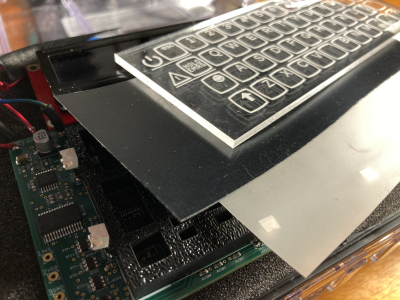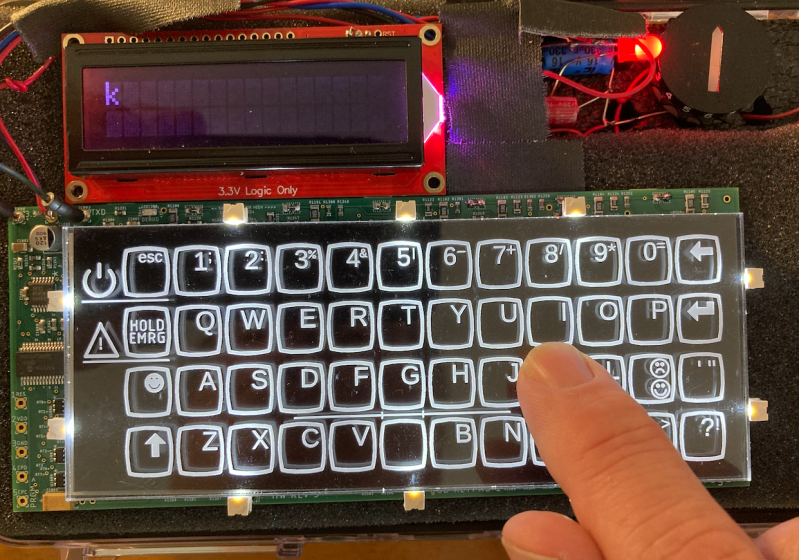Making keyboards is easy, right? Just wire up a bunch of switches matrix-style to a microcontroller, slap some QMK and a set of keycaps on there and you’re good to go. Well, yeah, that might work for cushier environments like home offices and Hackaday dungeons, but what if you need to give input under water, in a volatile area, or anywhere else you’d have to forego the clacking for something hermetically sealed? Mechanical switches can only take you so far — at some point, you have to go optical.
 This gorgeous keyboard works with reflected IR beams to determine when a finger is occupying a given key site (because what else are you going to call them?). Each key site has an IR LED and a phototransistor and it works via break-beam.
This gorgeous keyboard works with reflected IR beams to determine when a finger is occupying a given key site (because what else are you going to call them?). Each key site has an IR LED and a phototransistor and it works via break-beam.
[BenKoning] wanted a solution that would be easy for others to build, with a low-cost BOM and minimal software processing cost. It just so happens to be extremely good-looking, as well.
The reason you can’t see the guts is that black layer — it passes infrared light, but is black to the eye. The frosted layer diffuses the beams until a finger is close enough to register. Check it out in action after the break, and then feed your optical key switch cravings with our own [Bob Baddeley]’s in-depth exploration of them.
















Very nice
Cool. I still like to use my laser projected keyboard.
Those look so cool but I’ve never read a good review beyond “Oh it’s a neat toy.”
Are they actually useful?
That’s very old technology: I already saw it in TRON, circa 1982 :-D
(just joking, of course: it’s really cool)
That is neat.
Just don’t lightly tap the ‘keyboard’ keys while you are thinking on what you need to type next as I sometimes do… :)
I learned to stop that habit after I kept triggering Windows popup – Do you want to turn on sticky keys?
I once spilled a bunch of orange cordial over my keyboard at university while a little inebriated. The next day I was whacking the shift key to loosen it up, because it was sticky from the sugary residue, and which point I got that same popup:
Windows: “Do you want to turn on sticky keys?”
Me: “I’m trying to fix ***ing sticky keys!”
At least you were “a little inebriated”. I poured a coke over a laptop just for being dumb, no alcohol required :-D
My mother had a habbit to eat over her keyboard – a snack was between monitor and keyboard. And snacks were fancy – slices of fish in oil or sandwitch with honey. When I saw this project I thought “not bad” now after you comments I thik “briliant! Heaven to clean!”.
please show me how it work wit polish chars?
ctrl+shift+A == ctrl Ą
or more ctrl+shift+pgup for next tab
The optics would probably perform even better after a bit of polishing.
No press feedback? Then a touch LCD is still better, checkout nextion.
The optics would probably perform even better after a bit of polishing.
I was thinking that this might be improved by adding a switch to the backplate that gets depressed when you press on the keyboard. And then only register the press when the button is clicked.
But maybe even better: use conductive foam instead of that hard-plastic shadow mask, and measure it’s conductance to determine if someone’s pressing down on the keyboard?
it’s over engineered for a prototype that will never be used again. he could have made something much cheaper by measuring capacitance on a bare copper pcb.
Some little UI work (making the keys you touch change color ? pulse ? or sort of “ghost” as you type ?) would make this more usable i bet
Make it bigger and add some haptic feedback and I think it could be a winner!
It would be nice if the IR intensity was high enough to provide haptic feedback. “Special” keyboards are rarely useful if a user does not have immediate feedback on the keypress. Good implementation, though
How do you reckon infrared light could provide haptic feedback?
Temperature differential shockwave? That’s quite a bit if IR intensity. 😁
I will keep using whatever keyboards I can get for free in my garage, but a bigger version of this might actually survive in that enviroment
I’m wondering how well this could be made to work underwater? Could it disassociate, say cloth draped over it to an intended keypress?
My first thought was “bruised fingertips”.
Nice, so with a different software it probably also could function as a swipe keyboard….